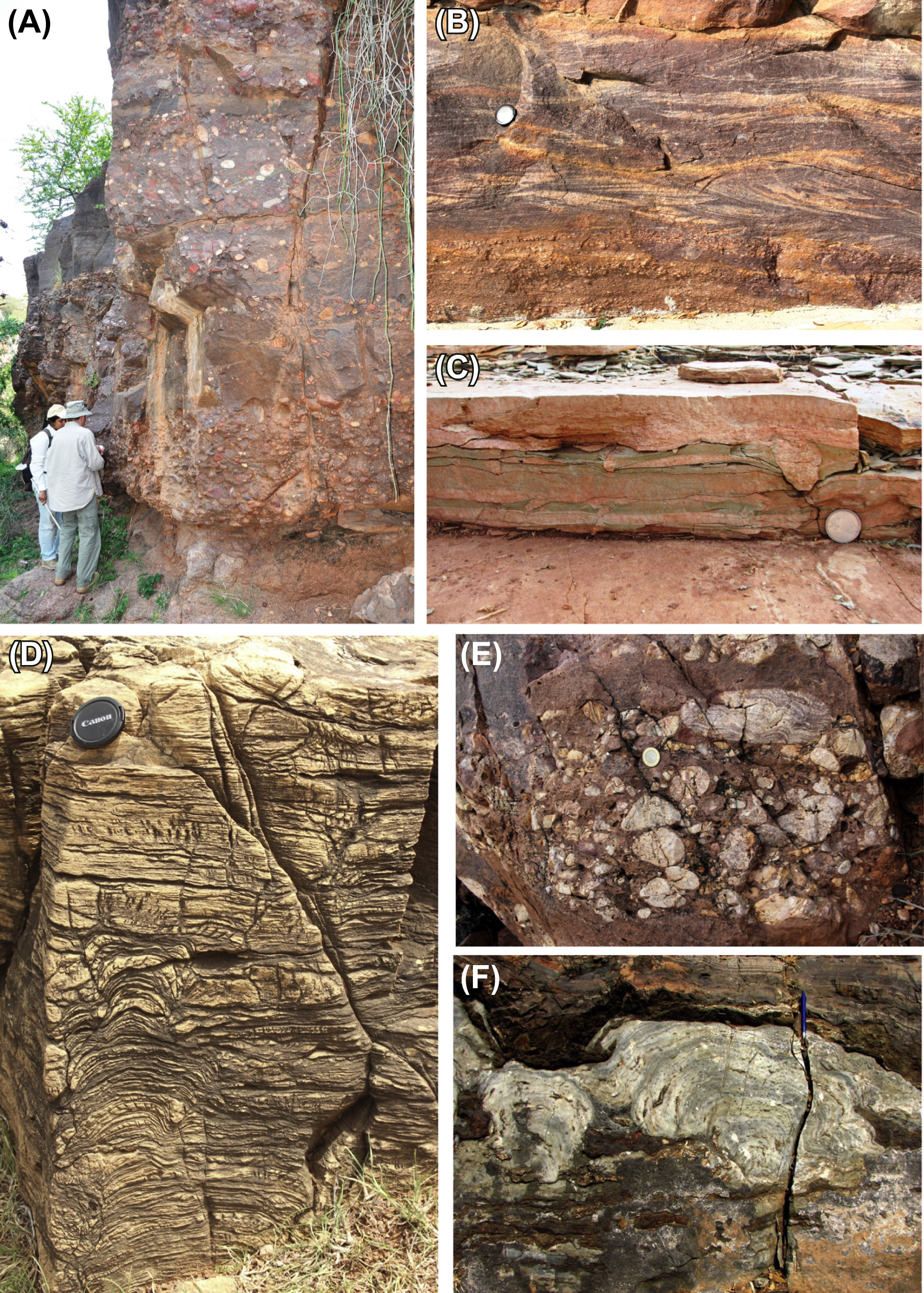Vempalle Fm
Type Locality and Naming
Upper formation of Papghani Gr
Lithology and Thickness
Stromatolitic dolomite, calcareous shale; with basic-lava flows and intrusives. The lower part of the Vempalle Formation consists of thin strata of splintery red mudstone alternating with cross-stratified siliciclastic and calc-arenite strata, often with herringbone structure. Other associated structures include tepee structure, desiccation cracks with lime mud or sand filling, molar-tooth structure, and halite casts. Thin- to thick-bedded dolomite with gently convex-up, lens-shaped bed geometry dominate the upper part of the Vempalle Formation. Algal laminites grading through isolated stacked hemispheroid to laterally linked hemispheroidal (LLH) forms are common in the stromatolitic dolomite (Fig. image D).
[Figures: Field photographs showing lithology and sedimentary features in the Papaghni Gr of the Cuddapah Supergroup. Gulcheru Quartzite Fm - (A) basal conglomerate overlying granitic basement off Parnapalli; and (B) pebbly grit grading to rough cross-stratified coarse sandstone. (C) Heterolithic sandstone-shale at Gulcheru Quartzite Fm / Vempalle Fm transition. (D) Vempalle Fm - stromatolitic limestone, (E) Pulivendla Quartzite Fm - basal conglomerate; note silicified stromatolite remnant in a large pebble. Tadpatri Fm - (F) silicified stromatolite (hemispheroidal forms) intercalated with basaltic flow (dark band). (from Saha et al., 2016)]
Relationships and Distribution
Lower contact
Overlies the Gulcheru Quartzite Fm with a gradual contact.
Upper contact
Terminates in an unconformity; then overlain by Pulivendla Quartzite Fm (lower Chitravati Gr)
Regional extent
Relatively older part of the sedimentary succession is restricted to the Papaghni subbasin and constitutes the bulk of the Cuddapah Supergroup
GeoJSON
Fossils
Age
Depositional setting
Intertidal to subtidal; shoreface to inner shelf. The association of these stromatolitic dolomite and oolite-bearing carbonate in some sections and their cyclic repetition resemble shoaling up bars with fluctuation in the sea level. The Vempalle Formation with bar‒ interbar dolomite, stromatolite, and mudstone has been interpreted as of subtidal to intertidal origin.
Additional Information
